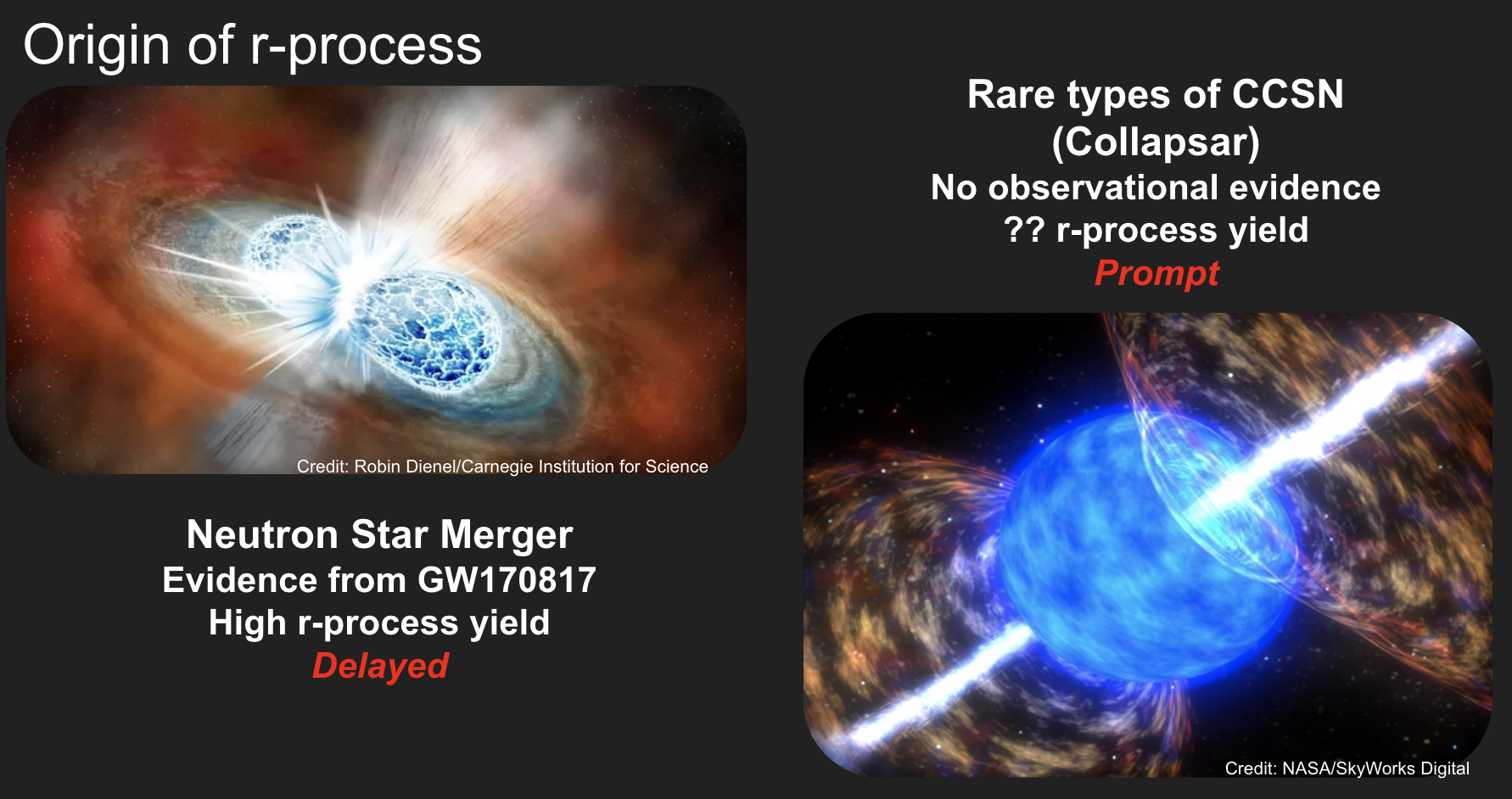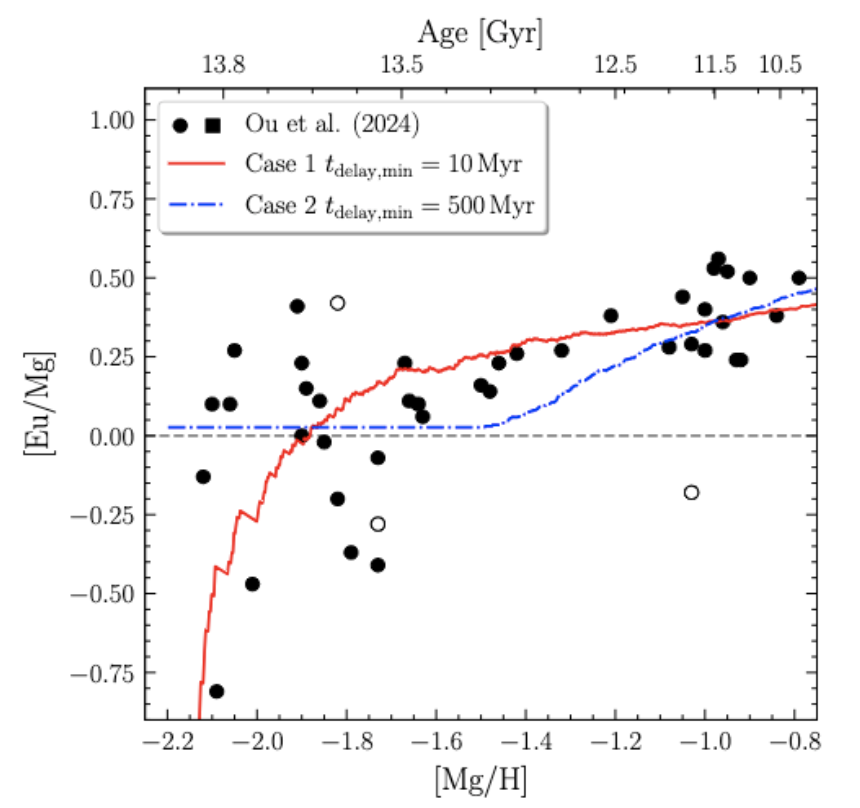The rise of the r-process in the Milky Way and its dwarf satellites
We look at stars to search for clues on the creation of some of the heaviest elements in the Universe.
Understanding the origin of elements is crucial for unraveling the processes that shaped the chemical composition of the universe and the formation of stars and galaxies. This project explores the origins of rapid neutron-capture process (r-process) elements in the universe, focusing on the chemical evolution of these elements in the Gaia-Sausage/Enceladus (GSE), a disrupted dwarf galaxy that merged with the Milky Way. By analyzing 43 GSE stars spanning a wide range of metallicities, we observed a rising trend in [Eu/Mg] abundances, providing the first clear evidence for delayed r-process sources, such as neutron star mergers (NSMs), in this system. This supports the idea that both prompt and delayed sources are necessary to explain the observed r-process enrichment.

This study showcases the power of using massive disrupted dwarf galaxies in the Milky Way halo to constrain early r-process enrichment and the astrophysical sites of the r-process. Systems like the GSE have stellar populations that are relatively easily accessible for obtaining high-resolution spectroscopy of member stars, and they have a less complex merger history than the Milky Way that makes these kinds of explorations possible. Multiple recent studies targeting the GSE have also observed this rise and similar searches in other local massive dwarf galaxies such as the LMC and Sgr are being performed. Further constraining the delayed r-process sources’ delay time distribution and combined element yields will rely on additional observations that probe the more metal-poor population in the GSE as well as other accreted dwarf galaxies.
